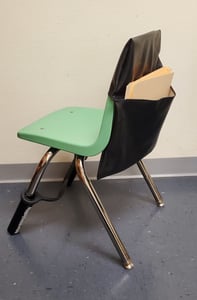During my first year as a school-based occupational therapist, I entered a classroom to perform an observation on a student who had possible sensory processing difficulties.
Upon entering the room, I immediately felt overwhelmed by the amount of items cluttering the classroom. Nearly every inch of the walls was covered with posters, and the perimeter of the room was lined with crowded bookshelves. Pencil boxes, books, and water bottles were scattered atop students’ desks, and above me hung dozens of examples of students’ artwork.
I thought to myself, wow, if I am a well-regulated adult, and I am feeling overwhelmed in this classroom, how is this student with sensory processing difficulties feeling every day?
At the start of this new school year, I urge teachers to work towards creating sensory-friendly classrooms by following these five tips:
- Decorations/Posters- Maximize the amount of white space on your classroom walls. In the therapy field, we call this “reducing visual clutter.” Fewer wall decorations and posters will help students locate important references more easily.

- Bookshelves- Cover your bookshelves with neutral, solid-colored curtains to hide books, games, and other supplies while not in use. Bright colors or patterns may distract students with sensory processing needs.

- Desks- Pockets that fit over the backs of chairs that can hold folders and notebooks are a great solution for reducing desk clutter. I also love pencil holders that adhere to the top of a desk. One teacher I work with calls these holders “pencil parking spots.”


- Alternative seating options- Wiggle cushions and desk bands are great tools to use that provide opportunities for movement while the student is seated. Bean bags with clipboards for older students and cube chairs for younger students provide sensory feedback to the body.
- Lighting- Try turning off the lights and lighting the room with natural sunlight at various points during the day to give students a break from overhead fluorescent lights.
 |
About The Author Tahnee earned her Masters Degree in Occupational Therapy from the University of Illinois at Chicago in 2010. She has worked with the pediatric population in the school setting since 2010 and in the outpatient clinic setting since 2013. Outside of work, Tahnee enjoys spending time with her husband, Nathan, her daughter, Zoe, and her dog, Ruthie. |
